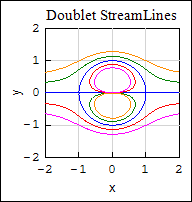Let explain in new conference to ease retrieval.
0. create the directory SmathFile in C:\
1. download the *.bmp [Doublet]
2. save the Doublet.bmp in C:\SmathFile\Doublet
At this point, the
Image READ COLOR SmathGraph should read Doublet in same document.
Observe how the Doublet is saved and recovered in the 1/1 ratio.
It is saved the same in the PDF ... Adobe opens the *.PDF in default zoom 85%.
You can zoom down [10%, 20% ...] and observe just smaller look.
Zoom 100% ... 1/1 original Smath.
The story starts here: zoom up [200%, 300%, 400% ...]
that corresponds to pixelation factors [(2,2), (3,3), (4,4) ...]
This is duplicate/triplicate/quadruplicate ... pixels population.
That is the only thing Adobe can do as a freeware.
If you would want the image zoomed in the Photoshop style, Adobe needs
a minimalist Fourier system. All that to say Smath has nothing to do
back in reading an *.PDF document. To understand what is simple pixelation,
the attached document demonstrates it, but in 20 minutes my laptop is still
pedaling in the butter.
For your interest, I have an Smath document that illustrates/explains the
Fourier zoom RGB. There are other techniques not demonstrable in Smath.
Please, do not hesitate for any question. Adobe supports zoom up/down
letters, glyphes ... else that are HTML coded, thus the nice zoomed up
Smath equations, program modules.
Image READ COLOR SamthGraph.sm (53 KiB) downloaded 89 time(s).
 New Posts
New Posts
 No New Posts
No New Posts
 New Posts
New Posts
 No New Posts
No New Posts